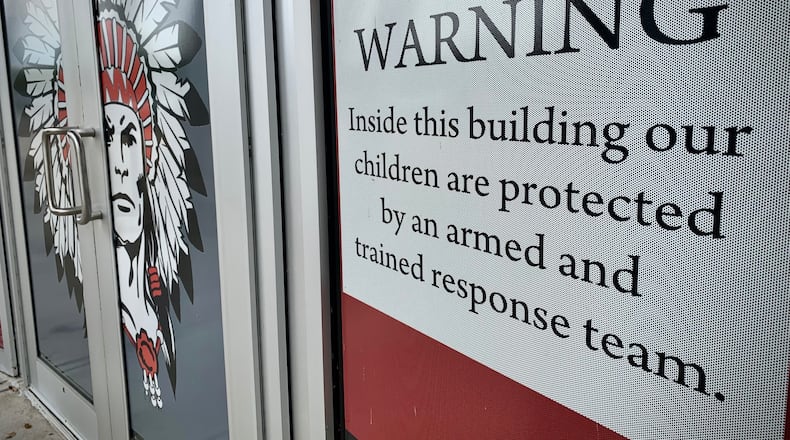Mad River schools superintendent Chad Wyen said in 2016 the school board passed a resolution allowing specific staff members access to guns inside school buildings. Those staff members volunteered for the role and were approved by the district administrators as well as law enforcement.
Wyen said the district had to cease the program last year after the Ohio Supreme Court ruled school districts can’t let their staff members carry guns on school grounds unless that person had Ohio peace officer training or 20 years’ of experience as a police officer. HB 99 will change that.
“We are very pleased with our legislators for passing HB99,” Wyen said. “This is a critical layer to our safety plan in order to protect our students, staff, and families in our school buildings.”
Wyen said the district will be reviewing the policy to ensure it complies with the current law and will update it if needed before reinstituting the team.
Similarly, Sidney schools had to disband its district response team after the court ruling. But superintendent Bob Humble said the district plans to reinstate its team after DeWine signs the bill into law.
HB 99 would allow people whose names were submitted by their local school board to the new Ohio School Safety and Crisis Center, run by the Department of Public Safety, access to weapons on school grounds. They would have to undergo a yearly criminal records check.
Those chosen would also have to undergo training, but it is not the same training as Ohio police officers. Peace officers must go through more than 700 hours of training to complete their certificate, according to the Ohio Attorney General’s Office.
Other districts, including Miamisburg, Dayton Public Schools and Springboro, have not yet decided if they would implement a district response team under HB 99, officials said. Centerville and Troy officials said their districts do not have any plans to change from their current policies, which do not allow teachers to be armed.
Instead, the schools rely on multiple school resource officers throughout the district.
Wyen said the district response team in Mad River has undergone 24 hours of Faster Saves Lives Training through Buckeye Firearms; 20 hours of Ohio Peace Officer Training Academy (OPOTA) private security firearms training; Stop the Bleed training, which goes over tourniquet care; a four-hour annual OPOTA Private Security Firearms requalification; annual move and shoot exercises with the Riverside police department and quarterly range time.
Wyen said the staff members were training outside of school hours throughout the 2021-22 school year, though they could not legally have access to guns inside schools.
Under HB 99, any local school district would have to notify the public they are allowing personnel to have access to guns inside the school zone. But the district does not have to identify which people have access or where the guns will be stored.
Any district that wanted to implement such a plan would have to go through its district’s Board of Education, noted Will Schwartz, deputy director of legislative services for the Ohio School Boards Association. That means if a district wanted to implement a plan but has not done so already, a public meeting and vote would need to take place.
Wyen said in the four years that Mad River had a district response team, there weren’t any issues. The team became an accepted part of the school’s culture, he said.
Humble said there were no issues when specific Sidney school staff had access to guns. He said the guns were stored in fingerprint-locked safes and most students didn’t think about the guns on a day to day basis. The only times staff could access the guns were for training or during a school shooting, he said. But all the school buildings have signs in front noting the district is protected by a district response team.
Humble said the district worked with the Shelby County Sheriff’s Office for the project and the Sheriff’s Office paid for the cost of the guns and ammunition. Sidney was one of the first districts to try a district response team, he said.
Last week, the two major Ohio teachers’ unions – the Ohio Federation of Teachers and the Ohio Education Association - issued a joint statement asking DeWine to veto HB 99, calling the proposal “dangerous and irresponsible.”
“Teachers and other school employees should not be asked to serve dual roles as educators and school safety personnel armed with weapons, but, if they are, rigorous training standards, as set under current Ohio law, are essential,” the unions said in a joint statement.
Wyen said Mad River is not the only Ohio school that has a district response team.
“The reality is, there are a number of school districts in Ohio that had response teams in place,” he said. “Some were very public with the information, some were not. To my knowledge, there were never any issues in those districts.”



